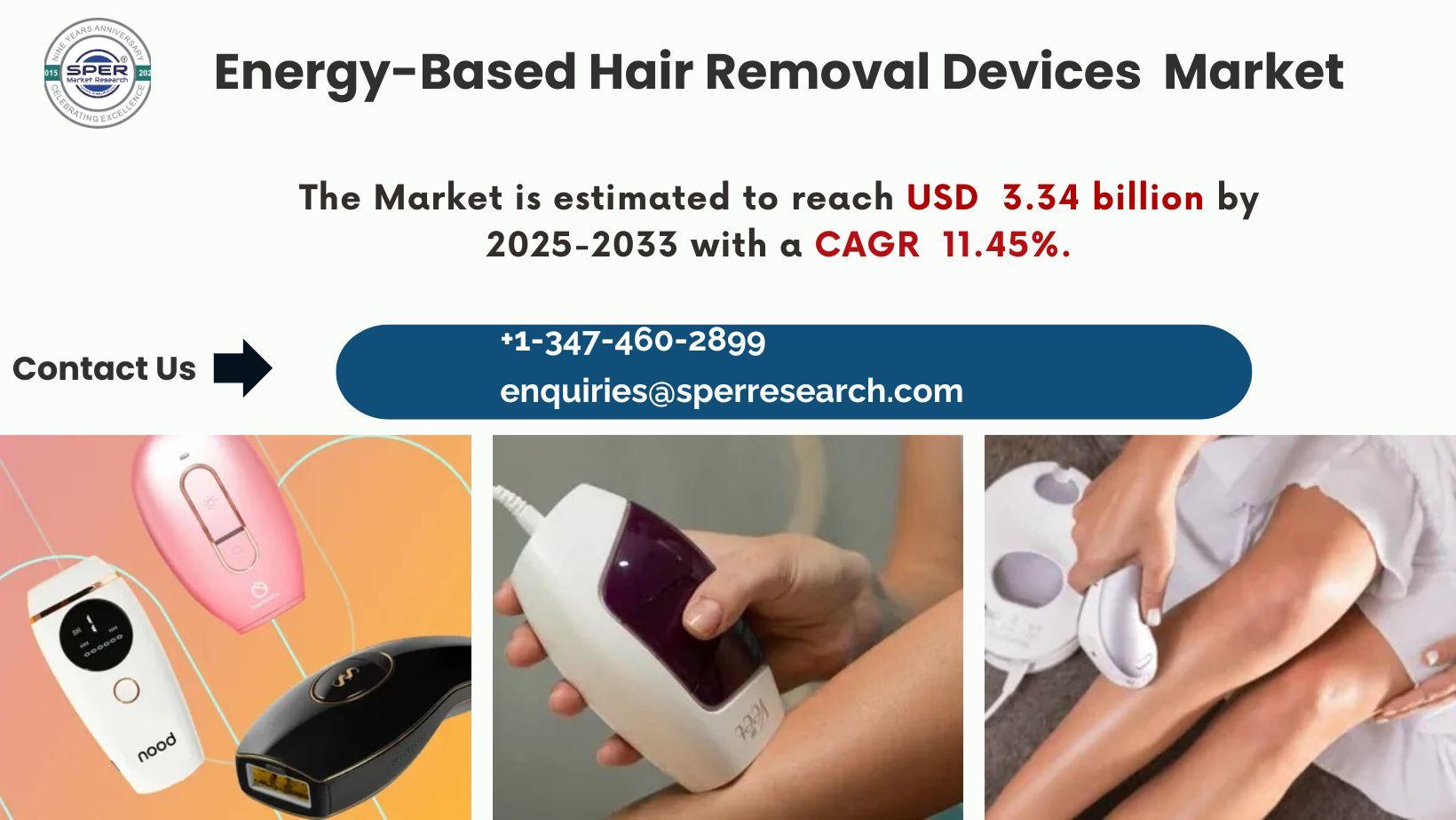Global Energy-Based Hair Removal Devices Market Growth Driven by Rising Aesthetic Demand

Energy-based hair removal devices use technologies like laser, intense pulsed light (IPL), or radiofrequency to reduce unwanted hair by targeting the hair follicles. These devices emit energy that is absorbed by the melanin in the hair, generating heat that damages the follicle and slows or stops future hair growth. The process is designed to be safe for the surrounding skin and typically requires multiple sessions for effective, long-lasting results. Laser treatments offer high precision, especially for people with light skin and dark hair, while IPL covers larger areas and is often used in home devices. These tools offer a convenient and semi-permanent alternative to traditional hair removal methods.
According to SPER market research, ‘Global Energy-Based Hair Removal Devices Market Size- Technology, By End Use - Regional Outlook, Competitive Strategies and Segment Forecast to 2034’ state that the Global Energy-Based Hair Removal Devices Market is predicted to reach 3.34 Billion by 2034 with a CAGR 11.45%.
Drivers:
The energy-based hair removal devices market is growing due to rising beauty awareness, higher disposable incomes, and a shift toward long-lasting, non-invasive hair removal methods. Younger consumers, influenced by social media and self-care trends, are increasingly choosing laser and IPL solutions over traditional methods. Technological advancements now offer safer, more effective treatments for various skin tones and hair types, while affordable at-home devices increase accessibility. Innovative products like Ulike’s Air 10 and new systems like AlloraPro and ECHO improve treatment efficiency. Additionally, strategic mergers—such as Cynosure’s integration with Lutronic—are driving global growth, innovation, and enhanced industry standards.
Energy-Based Hair Removal Devices Market Sample in PDF Format, Click Here
Restraints:
The energy-based hair removal devices market encounters several key challenges that may restrict its growth. One major barrier is the high cost of professional treatments and advanced home-use devices, which can be prohibitive for price-sensitive consumers. Safety concerns, including risks of burns, skin irritation, and reduced effectiveness on certain skin tones or hair colors, also limit broader adoption. While technology has advanced, achieving consistent results across all skin and hair types remains difficult. Additionally, strict regulatory requirements and the need for skilled professionals in clinical settings add complexity. The market is also impacted by rising competition and the presence of unregulated, low-quality products that can undermine consumer confidence.
In 2024, North America dominated the global energy-based hair removal devices market, fueled by innovation, rising demand, and major brand expansion. The launch of Ulike X, the first professional IPL device for men, highlights the growing trend in male grooming and at-home treatments. Some significant market players are AbbVie, Alma Lasers, Cutera Inc., Cynosure, InMode, Lumenis Ltd., Merz Pharma, Sinclair, Solta Medical,
For More Information, refer to below link: –
Energy-Based Hair Removal Devices Market Growth
Related Reports:
U.S. Uterine Fibroids Treatment Devices Market
Chemotherapy-Induced Neutropenia Treatment Market
LinkedIn | Instagram | Facebook | Twitter
Contact Us:
Sara Lopes, Business Consultant — USA
SPER Market Research
+1–347–460–2899
- energy_based_hair_removal_devices_market
- laser_hair_removal_technology
- IPL_hair_removal_market_growth
- aesthetic_devices_market_trends
- home_use_beauty_devices
- non_invasive_cosmetic_treatments
- global_hair_removal_industry
- dermatology_and_skincare_devices
- beauty_technology_innovation
- medical_aesthetic_equipment_market
- Art
- Causes
- Crafts
- Dance
- Drinks
- Film
- Fitness
- Food
- Jocuri
- Gardening
- Health
- Home
- Literature
- Music
- Networking
- Alte
- Party
- Religion
- Shopping
- Sports
- Theater
- Wellness



